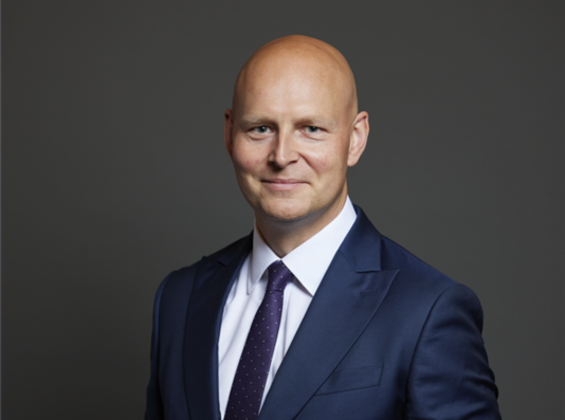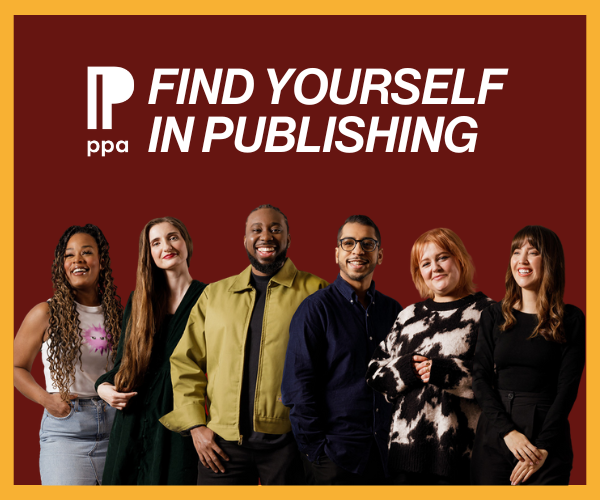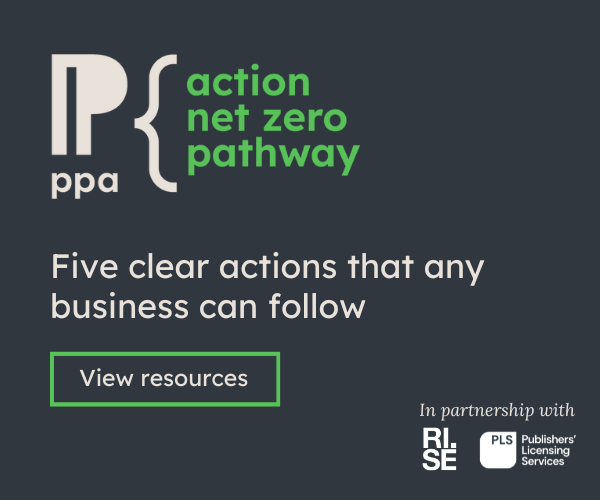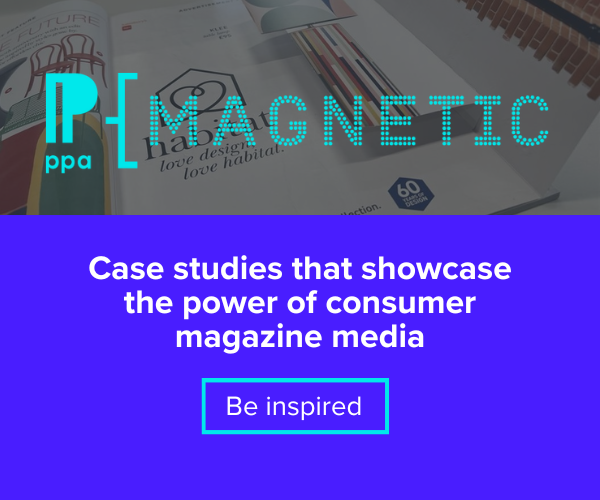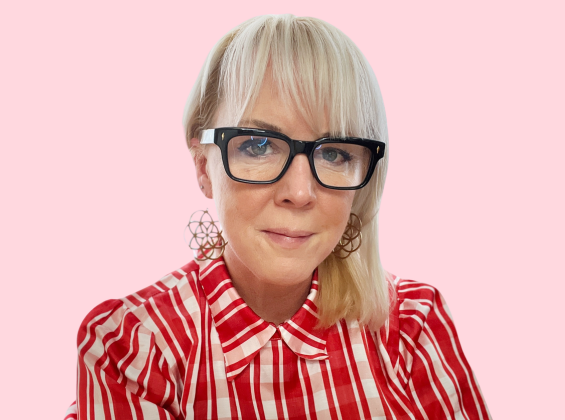What made you want to work in publishing?
Magazines have always been a treat. Whether it was buying Smash Hits with my pocket money as a child or picking up the summer bumper edition of _Cosmo _before a girls' holiday, they have always been something I've looked forward to reading.
I think magazines can offer something that no other platform can: an opportunity to truly switch off. This past year has seen me glued to some form of screen at all times, and when I’ve made the conscious effort to step away from this, I’ve chosen to read the latest issue of House Beautiful (I'm a sucker for all and any types of home improvement advice), and it has given my tired, lockdown brain a little treat.
I also think the gravitas of the brands was a big pull for wanting to work in publishing. Four years into my Hearst UK career, and I'm still proud to brag about our brands when asked what I do for a living. It’s hard not to feel excited when they are big household names we’ve all grown up with and that continue to evolve and serve a new generation of readers.
Chart your career from the start to where you are now…
I would be lying if I said I left school at 18 with a clear idea of where I wanted to go or what I wanted to be. The truth is, I fell into a degree in Advertising & PR at the University of Lincoln. However, it was the best accident because I absolutely loved it.
Leaving University facing a pretty poor job market meant I found part-time waitressing work in-between a summer internship at a PR agency. Over the next few years, I secured a couple of jobs as a Marketing Assistant. At the time, I was still learning how the industry worked and what all the various roles entailed, but it gave me a good understanding of brands.
It wasn’t until I started at SAY Media (at the time a global publishing company that offered a platform to professional publishers) that I truly started to get an insight into the world of media and publishing. A small, vibrant office in the heart of Fitzrovia, I entered as their “Girl Friday”, helping the sales team with proposals, running the office and assisting the Creative Solutions team with ideas – it really was a great way to experience a bit of everything. Then, guided by a wonderful mentor Carla Faria, who went on to head up the Foundry at TI Media, I started to try my hand at partnerships.
SAY Media’s responses were heavily rooted in influencer campaigns, we managed many influencer websites, so it made sense that we also worked with them on advertising partnerships. Again, this was a great opportunity to be creative, learn how to use insight to fuel ideas and try my hand at talking with media agencies. So, for the next few years, I stayed with SAY, learning the ropes of Creative Solutions, booking campaigns and being introduced to the phenomenon of media lunches!
When the role at Hearst UK came up, I was apprehensive about joining such a large company. From leaving University, I had only ever worked in small teams and Hearst UK was a global beast with a sprawling central London office. Nonetheless, I was up for the challenge and joined amidst a re-structure with James Wildman taking the helm as CEO. The thing I’ve realised about a big company is that the potential is vast. We’re not just a publisher, we’re an events company, we’re data scientists, we’re social gurus, we’re designers and much, much more!
Explain what the role of Creative Solutions Director entails?
I oversee a selection of media agencies, working with a variety of brands and helping them craft award-winning, metric smashing, powerful partnership campaigns that span our entire portfolio. Every day requires wearing a different hat – one day I can be working on a beauty brief and the next I'm trying to launch a new car to the market with a bang. Think of us as an in-house creative agency, we get given a brief for a product, and we have to try and develop a creative solution from our brand's tone of voice. That could be anything from a series of digital articles, engaging social videos, print cover wraps or a one-off bespoke event.
Every solution we develop has insight and data at its core. We can’t understand a brief or its audience unless we have taken the time to look at the insight. It’s from good insight that we can build the best creative ideas.
For example, a few years ago, I worked on a brief for a fabric conditioner that was trying to make a fundamentally boring product interesting to a millennial generation. They told us that their product made clothes last longer because it protected the fibres in the fabric. From that, we tapped into a sustainability angle – if your clothes were lasting longer, you didn’t need to invest in the fast fashion industry so frequently. We also knew from our audience insight and data that the millennial readers of _Cosmopolitan _and _ELLE _were big into their sustainability and what’s more, they were actively looking to be educated on how they could be doing more.
It was here that the Comfort Swap Shop was born, a five-day pop-up shop in the heart of Soho that we created in collaboration with Oxfam and The Princes Trust. Its purpose was to encourage people to bring in pre-loved clothes and swap them for another item, all of which had been lovingly cleaned using the Comfort fabric conditioner. Without insight, we wouldn’t have made that sustainability link, and we wouldn’t have created the successful campaign we did.
What kind of insights was the Proud to be Me initiative in response to?
The past decade has brought with it a flurry of positive movements for the LGBTQ+ community. We’ve seen legal rights come on leaps and bounds, and popular culture has embraced the community like never before. We are now working with advertisers to help provide them with innovative ways of connecting with the LGBTQ+ community all-year round, whilst still recognising that Pride is a major moment in the calendar. It’s really important we create an environment that truly supports the community 365 days a year.
After talking to our colleagues on our LGBTQ+ & Diversity and Inclusion committee, it became apparent that there was still a long way to go despite the progress. Our insight unearthed that the LGBTQ+ population are less satisfied with their lives compared to the general population. We wanted to understand why this might be and, after some more research, discovered many contributing factors, some of which were: a worryingly high harassment level, with 2 in 5 having experienced verbal or physical harassment because they were LGBTQ+; there was also a lack of appropriate representation, with over 72% feeling that representation in media and advertising was tokenistic; another prominent thread was 'support' – those within the community didn’t feel supported in their community or workplace.
All of this insight led us to a crucial question: how can we help raise the life satisfaction of those within the LGBTQ+ community? And so Proud to be Me was born – an always-on, editorially-driven initiative that asks us to level up our representation within our magazines, increases our support in the areas that matter and grows an army of allies who will help to uplift the community within society.
How have you seen audience and consumer data and insight change over the last year?
Our insight & research team are constantly running new projects, and the past year especially has seen us monitor the changing reaction to the pandemic amongst our readers. One thing that has become very clear is that the expectation of brands is changing. Consumers now want advertisers to play a more integral role. They want brands to support, show empathy and give back. Whereas in the past a brand could blend into the background on cultural issues, now staying quiet isn’t an option. We’ve seen the emotions of our audience naturally peak; undeniably, a feeling of anxiety has led the charge. As restrictions are easing, they are looking to brands & advertisers to support them in getting their fitness, wellbeing and mental health back on track.
I think social mobility needs to be on everyone’s radar. It’s something that Hearst UK as a company is driving forward with. We have a fantastic representative in Farah Storr, EIC of ELLE UK, who sits on the UK’s Social Mobility Commission, a public body supported by the Cabinet Office and whose objective is to ensure that circumstances of birth do not determine outcomes in life. There are three main areas where exclusivity is most prevalent: Law, Politics, and the Creative industries. To maintain originality within the creative industry, we need to ensure we are employing original thinkers, those who can offer a different perspective to the run of the mill. The way you get those types of people working for you is to open the doors of possibility to a much wider net than currently exists. If we can broaden the opportunities within publishing across the UK for young people, we can organically make our workplaces and our output more diverse and inclusive.
What magazine would you stockpile?
I’ve already given away my addiction to House Beautiful. However, my last house move brought to light a hidden obsession for Stylist. Back in the day, when the 9-5 commute was a thing, I would always try and hunt one down before jumping on the tube!
